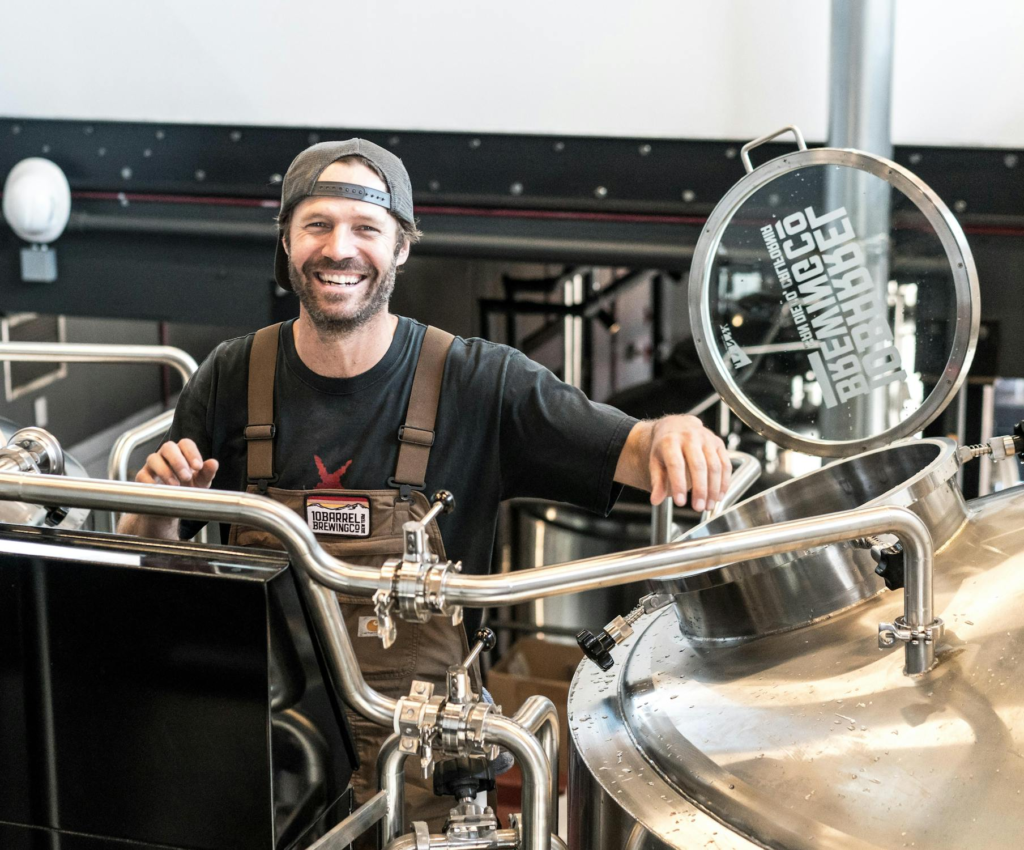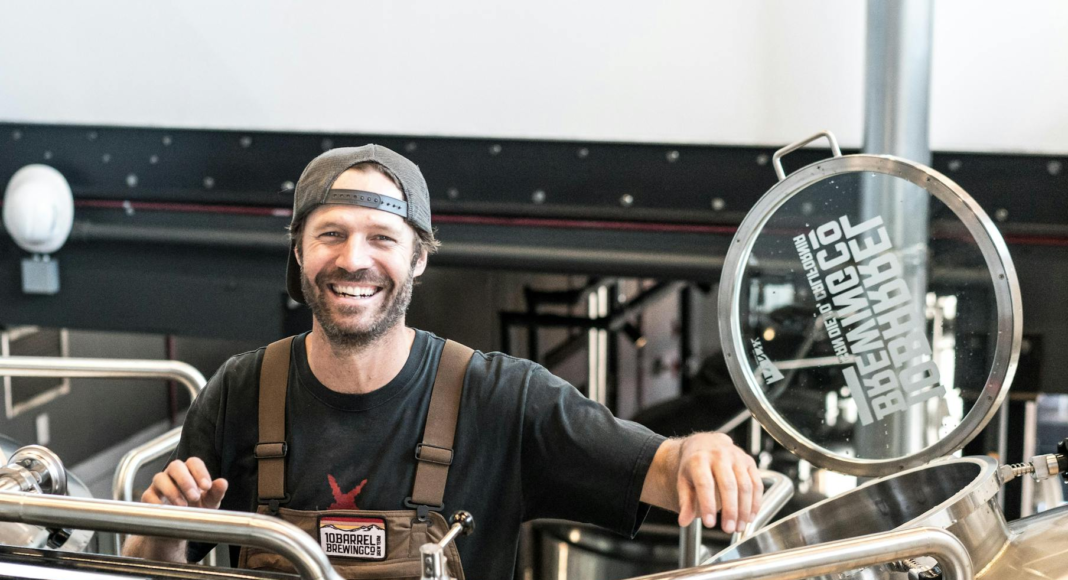Key Takeaways
- Discover the latest brewery software statistics that reveal rising adoption rates across craft and commercial breweries in 2025.
- Explore key data trends showcasing how breweries use digital tools to optimize production, inventory, and compliance.
- Understand the growing impact of AI, cloud computing, and mobile accessibility on modern brewery management systems.
In today’s rapidly evolving brewing industry, technology is playing an increasingly vital role in streamlining operations, enhancing product quality, and driving business growth.
From large-scale commercial breweries to independent craft beer producers, the demand for smart, integrated brewery software solutions has surged dramatically over the past decade.
As breweries aim to meet growing consumer demands, maintain consistency, ensure compliance, and optimize supply chains, the use of modern software tools has become essential for gaining a competitive edge.

Brewery software, also known as brewery management systems, encompasses a wide range of digital solutions that help breweries manage everything from production scheduling and inventory tracking to sales analytics, compliance reporting, and customer relationship management.
These systems offer real-time insights into operations, automate manual processes, and enable breweries to scale their production while maintaining precision and efficiency.
As digital transformation continues to reshape the food and beverage sector, breweries are increasingly turning to cloud-based, mobile-friendly, and AI-integrated platforms to stay agile in a competitive marketplace.
Understanding the latest statistics, data points, and market trends surrounding brewery software is crucial for brewery owners, managers, software developers, and investors alike.
By exploring these insights, stakeholders can identify growth opportunities, recognize the software functionalities that are most in demand, and make informed decisions when selecting or developing brewery technology solutions.
Whether you’re a craft brewery looking to upgrade your systems or a tech provider aiming to innovate in the brewery tech space, staying informed on the current trends and usage data is key to strategic planning and long-term success.
This comprehensive overview delves into the top 20 most important statistics, data, and trends shaping the brewery software landscape in 2025.
From adoption rates and market size projections to feature usage trends and industry challenges, this detailed guide presents a data-driven snapshot of how brewery software is revolutionizing operations in the beer-making world.
Each insight is curated to help readers grasp the evolving role of technology in brewing and how it can be leveraged to achieve operational excellence, ensure quality control, and maximize profitability in a competitive global market.
Before we venture further into this article, we would like to share who we are and what we do.
About 9cv9
9cv9 is a business tech startup based in Singapore and Asia, with a strong presence all over the world.
With over nine years of startup and business experience, and being highly involved in connecting with thousands of companies and startups, the 9cv9 team has listed some important learning points in this overview of the Top 20 Brewery Software Statistics, Data & Trends.
If your company needs recruitment and headhunting services to hire top-quality employees, you can use 9cv9 headhunting and recruitment services to hire top talents and candidates. Find out more here, or send over an email to [email protected].
Or just post 1 free job posting here at 9cv9 Hiring Portal in under 10 minutes.
Top 20 Brewery Software Statistics, Data & Trends
- In the year 2024, the global brewery software market was valued at approximately $150 million, reflecting the growing adoption of digital solutions tailored specifically for brewery operations and management.
- Industry analysts project that the brewery software market will experience a compound annual growth rate (CAGR) of 9.21% between 2025 and 2032, driven by increasing demand for automation and efficiency in brewing processes.
- By the year 2032, the brewery software market is expected to expand significantly, reaching an estimated market size of $278 million as more breweries adopt advanced software solutions to streamline production and inventory management.
- The broader global market for wine, beer, and spirits software was valued at $13.69 billion in 2024, highlighting the substantial investment in digital tools across the alcoholic beverage industry.
- This market segment is forecasted to grow to $15.17 billion by 2025, representing a robust compound annual growth rate of 10.8%, fueled by technological advancements and increasing demand for integrated software solutions.
- Looking further ahead, the wine, beer, and spirits software market is projected to reach a valuation of $21.57 billion by 2029, underscoring the accelerating adoption of digital platforms in beverage production and distribution.
- Specifically, the brewery inventory software market was valued at $7.4 billion in 2024, reflecting the critical role of inventory management systems in optimizing raw material usage and reducing waste in breweries.
- This segment is expected to witness substantial growth, reaching $24.9 billion by 2037, with a compound annual growth rate exceeding 9.8% during the period from 2025 to 2037, driven by increasing complexity in brewery supply chains.
- The global beer production line market, which closely relates to brewery software for process automation, was valued at approximately $5 billion in 2025, indicating significant investment in production technology.
- This market is projected to grow steadily at a compound annual growth rate of 6% from 2025 through 2033, reaching an estimated $8 billion by 2033, as breweries seek to enhance production efficiency through integrated software and hardware solutions.
- In 2024, North America accounted for approximately 40% of the global brewery software market share, reflecting the region’s mature brewing industry and early adoption of digital technologies to improve operational workflows.
- Europe held about 35% of the brewery software market share in 2024, driven by a strong tradition of brewing and increasing investments in software solutions to comply with regulatory standards and optimize production.
- Cloud-based brewery software solutions represented 65% of all brewery software deployments in 2024, indicating a clear preference for scalable, flexible, and remotely accessible platforms among breweries of all sizes.
- The number of operating craft breweries in the United States increased from approximately 8,000 in 2020 to over 10,000 by 2024, a growth that has significantly contributed to the rising demand for specialized brewery software to manage complex operations.
- Direct-to-consumer beer sales in the U.S. grew by 25% in 2023 compared to the previous year, a trend that has accelerated the adoption of brewery inventory software to manage increased order volumes and distribution logistics.
- The integration of artificial intelligence (AI) technologies into brewery software is expected to grow at a compound annual growth rate of 15% from 2024 to 2030, enabling breweries to leverage predictive analytics and optimize production processes.
- Adoption of Internet of Things (IoT)-enabled brewery software solutions increased by 30% between 2022 and 2024, reflecting the growing use of connected devices for real-time monitoring and control of brewing operations.
- Blockchain technology adoption within brewery supply chain software is projected to grow at a compound annual growth rate of 20% through 2030, driven by the need for enhanced transparency and traceability in ingredient sourcing and distribution.
- On average, breweries that implement specialized brewery software experience a reduction in inventory waste by 12% to 15%, demonstrating the effectiveness of these tools in improving stock management and minimizing losses.
- Additionally, brewery software solutions have been shown to reduce production downtime by an average of 18%, enabling breweries to maintain higher levels of operational efficiency and meet demand more consistently.
Conclusion
As the brewing industry continues to evolve in response to technological advancements, shifting consumer preferences, and increasing regulatory demands, the importance of leveraging brewery software has never been more apparent. The data and trends explored in this article clearly demonstrate how brewery management systems are reshaping how modern breweries operate—from optimizing production efficiency and inventory control to streamlining compliance and enhancing customer engagement.
The top 20 brewery software statistics and trends reveal a growing reliance on digital tools to manage the complexities of brewing operations across both small craft breweries and large commercial enterprises. Key metrics such as adoption rates, market growth projections, feature utilization, and return on investment all point toward a future where brewery software becomes an indispensable component of every successful brewing business. These tools are no longer just a competitive advantage—they are becoming a fundamental requirement for breweries seeking to scale their production, reduce waste, maintain consistency, and respond quickly to market demands.
Moreover, trends such as cloud-based platforms, mobile accessibility, integration with IoT and AI technologies, and predictive analytics are setting the stage for a smarter and more agile brewing industry. Breweries that embrace these innovations are better equipped to make data-driven decisions, forecast demand accurately, and align their production cycles with real-time insights. This not only leads to cost savings and operational efficiency but also enables breweries to deliver superior quality products with greater consistency and transparency.
In addition, the statistics highlight an increasing interest in software solutions that go beyond core production management. Sales and distribution tracking, financial reporting, CRM functionalities, and sustainability monitoring are becoming crucial features in all-in-one brewery software platforms. This expansion of capabilities allows breweries to achieve end-to-end visibility across their operations while driving long-term strategic planning and business growth.
As competition intensifies and consumer expectations rise, brewery software provides the digital foundation needed to thrive in this dynamic environment. From startups and microbreweries to established industry leaders, adopting and effectively utilizing brewery management systems will be key to maintaining operational excellence and achieving sustained profitability.
For stakeholders, including brewery owners, operators, software developers, and investors, staying up to date with the latest statistics and trends is essential for informed decision-making. Whether you’re evaluating new software, developing a custom system, or looking to optimize your existing tools, the insights presented in this blog offer a valuable lens into where the brewery software market is heading and what strategies are proving most effective.
In conclusion, the transformation driven by brewery software is not only reshaping how breweries function today but also defining the future trajectory of the brewing industry as a whole. Those who stay informed, remain adaptable, and invest in the right technology solutions will be best positioned to navigate challenges, seize emerging opportunities, and craft a resilient, tech-forward brewing operation in the years to come.
If you find this article useful, why not share it with your hiring manager and C-level suite friends and also leave a nice comment below?
We, at the 9cv9 Research Team, strive to bring the latest and most meaningful data, guides, and statistics to your doorstep.
To get access to top-quality guides, click over to 9cv9 Blog.
People Also Ask
What is brewery software used for?
Brewery software helps breweries manage production, inventory, sales, distribution, compliance, and quality control efficiently.
Why are brewery software statistics important?
They provide insights into industry trends, adoption rates, and how breweries are using technology to improve operations and profitability.
What are the most common features of brewery software?
Typical features include production scheduling, inventory tracking, sales reporting, compliance tools, and customer relationship management.
How does brewery software improve operational efficiency?
It automates manual processes, reduces errors, provides real-time data, and streamlines workflows across departments.
Which brewery software solutions are trending in 2024?
Popular tools in 2024 include Ekos, Beer30, Ollie, OrchestratedBeer, and BrewPlanner, all offering end-to-end management features.
Is cloud-based brewery software better than on-premise?
Cloud-based systems offer easier updates, remote access, lower upfront costs, and scalability, making them ideal for modern breweries.
What is the market size of brewery software in 2024?
The global brewery software market is projected to grow steadily, with estimates suggesting a value surpassing hundreds of millions USD.
How do small craft breweries benefit from software?
Software helps craft breweries streamline production, manage inventory, maintain consistency, and grow sustainably with limited resources.
Are brewery software tools customizable?
Yes, most brewery software platforms offer customizable features tailored to specific workflows, product lines, and business sizes.
What trends are shaping brewery software in 2024?
Key trends include AI integration, mobile-friendly interfaces, cloud computing, real-time analytics, and IoT-enabled monitoring.
How does AI impact brewery software?
AI enhances predictive analytics, quality control, maintenance scheduling, and demand forecasting for smarter decision-making.
Can brewery software help with compliance?
Yes, it tracks regulatory data, manages reporting requirements, and helps breweries stay compliant with local and international laws.
Is brewery software only for large breweries?
No, many brewery software tools are designed for small and mid-sized breweries, with scalable features and affordable pricing.
How does brewery software support inventory management?
It tracks raw materials, monitors stock levels, manages reordering, and reduces waste through real-time inventory control.
What kind of data do breweries track using software?
Breweries track production volumes, batch details, fermentation metrics, sales data, financial reports, and compliance logs.
How fast is the adoption of brewery software growing?
Adoption is growing rapidly as more breweries realize the benefits of automation, data centralization, and improved efficiency.
Do brewery software tools offer mobile apps?
Yes, many modern brewery software platforms offer mobile apps for real-time access to production and sales data on the go.
Can brewery software integrate with POS systems?
Most platforms support integration with POS systems, enabling streamlined sales tracking, reporting, and customer management.
How does software help in scaling brewery operations?
It standardizes processes, ensures quality consistency, manages resource allocation, and enables data-driven expansion strategies.
What are the top challenges with brewery software adoption?
Challenges include initial cost, staff training, system compatibility, and resistance to changing traditional workflows.
What role does data analytics play in brewery software?
Data analytics helps breweries make informed decisions by providing insights into production efficiency, sales trends, and profitability.
Can brewery software track sales and distribution?
Yes, most systems offer modules for tracking orders, deliveries, customer relationships, and distributor performance.
Is training required to use brewery software?
Basic training is usually required, but most platforms are user-friendly and offer onboarding, tutorials, and customer support.
Can brewery software help improve product quality?
Absolutely. It tracks key metrics like fermentation conditions, ingredient quality, and process consistency for better quality control.
How does IoT integrate with brewery software?
IoT devices connect to brewery software for real-time monitoring of equipment, temperatures, tank levels, and brewing conditions.
What is the ROI of investing in brewery software?
The ROI is high due to time savings, reduced waste, improved accuracy, and better decision-making across all brewery operations.
Can brewery software handle multi-location management?
Yes, many systems support centralized management for breweries operating in multiple locations or across different regions.
How is sustainability supported by brewery software?
Software can track water usage, energy consumption, and waste generation, helping breweries meet sustainability goals.
What industries or roles benefit most from brewery software?
Brewmasters, production managers, inventory supervisors, compliance officers, and business owners all benefit significantly.
What future trends are expected in brewery software?
Future trends include more AI automation, blockchain integration for traceability, enhanced mobile features, and deeper analytics.































![Writing A Good CV [6 Tips To Improve Your CV] 6 Tips To Improve Your CV](https://blog.9cv9.com/wp-content/uploads/2020/06/2020-06-02-2-100x70.png)


